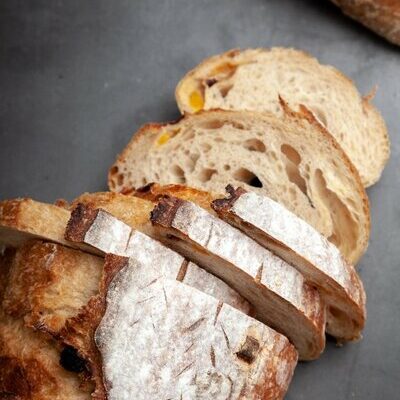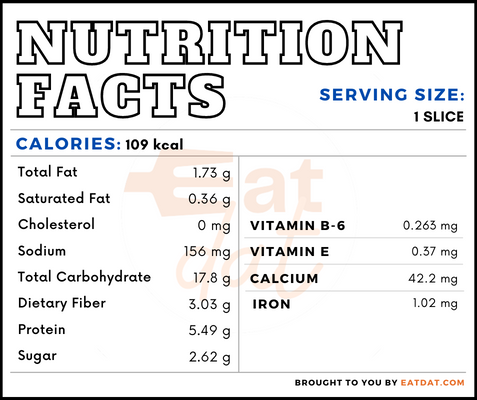
Whole Grain Bread
What is Whole Grain Bread?
Whole grain bread is a type of bread that is made from the flour of whole grains instead of from refined flour. The most common bread of this type is whole wheat bread, but it could also contain other grains or cereals including rice, barley, rye, oats, corn, millet, sorghum, or a mixture of some of these grains.
- Also, this type of bread may be made from pseudocereals such as buckwheat or quinoa.
- Whole grain breads have a complex and nutty flavor, depending on the cereals used.
Some of the most popular bread brands in the United States include:
- Dave’s Killer Bread
- Food for Life
- Happy Campers
- Mestemacher
- Alvarado St. Bakery
- Pepperidge Farm
- Schmidt Oldtyme
- Aunt Millie’s
- Base Culture
- Silver Hills Sprouted Bakery
Origin
For most of history, the bread consumed was made from whole grains. Humans have been making bread from wild cereals, which no longer exist today, for over 10,000 years. The earliest breads made from domesticated crops included barley, rye, and millet breads. Wheat bread, which is the most popular type of bread today, came into existence around 7,000 years ago. Archaeological evidence dates the earliest bread remains in Jordan at 14,000 years.
Nutrition
Nutritional profile for whole grain bread (1 slice):

Whole wheat bread is rich in different micronutrients, depending on the grains used. It is especially rich in calcium, magnesium, phosphorous, potassium, sodium, and folate.
Regular consumption of whole grains is proven to reduce the risk of cardiovascular diseases, diabetes, and gastrointestinal disorders, due to the presence of the bran, germ, and endosperm, which contains most of the nutrients in the grains. Also, it can help in minimizing obesity. Furthermore, it helps in reducing LDL cholesterol.
Commercial production
Breads can be made from a variety of whole grains, including amaranth, barley, buckwheat, bulgur, corn, millet, oats, quinoa, rice, rye, sorghum, wheat, teff, and others. Seeds of different types are also often added to this type of bread. The other ingredients required are water, yeast, and salt. First, all the ingredients are mixed and kneaded into a dough. Then, the dough is left to rise. Finally, the risen dough is baked in an oven.
Whole grain bread recipes
Whole grain bread may be made up from the flours of different grains or a mixture of them. To be classified as a whole grain, the flour must contain the germ, bran, and endosperm. Here are a few recipes:
- Whole Wheat Bread Pudding
- Multigrain Bread
- Rye Bread
- Danish Rye Bread
- Borodinsky
- Sourdough Pumpernickel
- Walnut Barley Loaf
- Buckwheat Millet Bread
- Millet Sorghum Bread
- Sourdough Honey Quinoa Bread
FDA regulations
Whole wheat bread is defined as bread in which the dough is made from the whole wheat flour, bromated whole wheat flour, or a combination of these, without the presence of refined flour. Whole grain breads made from other grains or cereals do not have a specific standard of identity. However, the FDA regulates all breads under the umbrella term of bakery products.
References
Bread: the extraordinary fate of an ordinary food item, Technogym https://www.technogym.com/us/newsroom/bread-history/
P, Nirmala Prasadi V, and Iris J Joye. “Dietary Fibre from Whole Grains and Their Benefits on Metabolic Health.” Nutrients vol. 12,10 3045. 5 Oct. 2020, doi:10.3390/nu12103045, https://www.ncbi.nlm.nih.gov/pmc/articles/PMC7599874/
McRae, Marc P. “Health Benefits of Dietary Whole Grains: An Umbrella Review of Meta-analyses.” Journal of chiropractic medicine vol. 16,1 (2017): 10-18. doi:10.1016/j.jcm.2016.08.008, https://www.ncbi.nlm.nih.gov/pmc/articles/PMC5310957/
